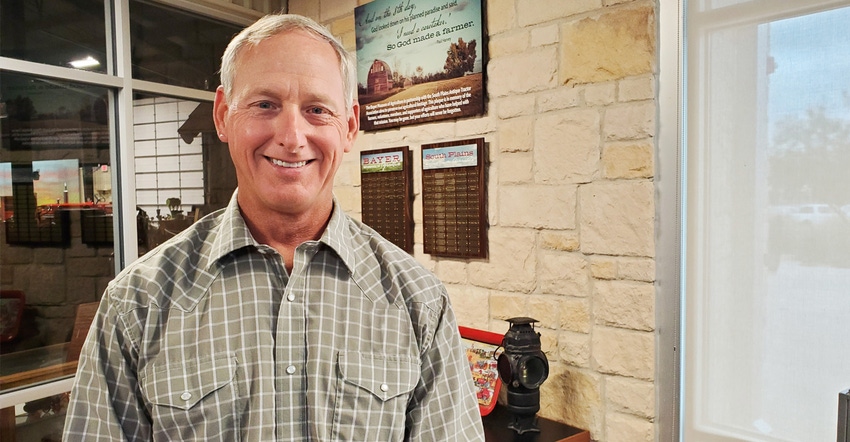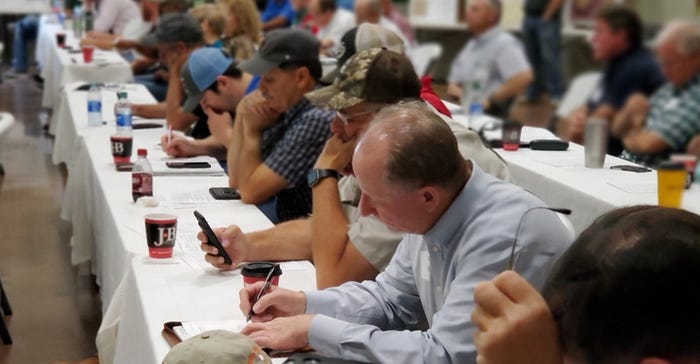
Gene drive technology. What is it? Should gene drive research be pursued? Who do you trust to make decisions about gene drive for agricultural pests? What factors need to be considered when making decisions about developing gene drive for agricultural pest management?
These questions and more are part of a gene drive questionnaire being administered throughout Texas to various groups, including producers, following an introduction about the topic.
Southwest Farm Press, SWFP, recently caught up with Dr. David Kerns, professor, associate department head and IPM coordinator, Texas A&M AgriLife Extension, following his presentation about gene drive technology at the 67th Annual West Texas Agricultural Chemicals Institute Conference at Lubbock, Texas.
SWFP: What is gene drive technology?
Kerns: Gene drive technology is a way of genetically manipulating an organism. It could be something like a mosquito or a fly. But it doesn’t have to be an insect, it can also be a mouse, a plant or something else. It's a new concept and it's something scientists (university, federal and private) have been working within the labs.

SWFP: How does it work?
Kerns: Genes of an organism are manipulated and spread through reproduction, so as the organism mates it transfers its genes to its progeny.
SWFP: Has anything been released?
Kerns: No. Nothing is in the field or has been released into the environment. It’s still in the labs.
SWFP: How would it be used?
Kerns: I think the real hope for this technology is with insects like mosquitoes for vector disease control, maybe malaria or Dengue fever. Maybe they can control these diseases using this kind of technology. But there are implications in agriculture and so we know there’s a lot interest in using it in agriculture.
SWFP: What is Extension’s role?
Kerns: We are part of the USDA National Institute of Food and Agriculture (NIFA) grant which includes Texas A&M AgriLife Extension, AgriLife Research, Texas A&M Entomology, UT Southwestern and the Bush School of Government & Public Service at Texas A&M University - Institute for Science, Technology and Public Policy. Various groups and individuals, from IPM agents to entomologists to researchers, are giving the presentations and then administering the survey. It’s a big group, so we can survey a lot of different audiences. We're trying to get a lot of different opinions because citizens are very diverse and have diverse opinions.
SWFP: Are you presenting or persuading?
We are introducing the concept. We're not trying to sell gene drive because honestly, we're not sold on it yet either. There's a lot of pros with it and a lot of cons. We don't know enough about it that we would even be comfortable trying to release something that's genetically modified into the environment.
SWFP: Who will process the survey data and how will the information be used?
Kerns: The Bush School of Government & Public Service at Texas A&M University - Institute for Science, Technology and Public Policy will analyze the survey data. This information is going to be used by the USDA and the regulatory agencies to help them determine how they want to address gene drive and if it should be used at all or how it should be done.
(NIFA provides Agriculture and Food Research Initiative (AFRI) grants to support research, education and extension activities in six Farm Bill priority areas:
Plant Health and Production and Plant Products;
Animal Health and Production and Animal Products;
Food Safety, Nutrition, and Health;
Bioenergy, Natural resources, and Environment;
Agriculture Systems and Technology;
and Agriculture Economics and Rural Communities, according to the NIFA website, www.NIFA.USDA.GOV.)
About the Author(s)
You May Also Like






